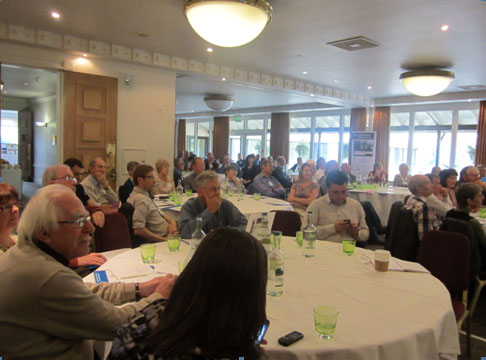As part of my Opening Up Archives traineeship at the West Yorkshire Archive Service, I am looking into the world that is Digital Preservation. Similar to a fellow trainee, my knowledge of digital preservation was pretty much nonexistent. When presented with the term, although I had my assumptions of what its true meaning was, I didn’t want to rely on that alone. With a background in IT and languages, getting to grips with digital preservation was a little easier than learning about archives as a whole. Digital Preservation, as mentioned in the previous Trainee Tuesday blog post: Tales from the Dark Archive, is the challenge to preserve digital material so that it can be accessed in the future.
In May, I attended the Digital Preservation Training Programme (DPTP) and it brought clarity to the concepts, models and acronyms associated with digital preservation. Practical activities enabled the other attendees and I to think about the subject, what issues there are surrounding it and to see if we could relate the topics to what we do in our own organisations. One benefit was that the OAIS functional model was broken down into sizeable chunks and discussed in great detail. The Open Archival Information system (OAIS) model is a reference model created to give understanding and knowledge of concepts and processes of digital preservation.
Now after five months, I am comfortable talking about checksums, ingest procedures and software involved as well as knowing how an archives works thanks to a lot of reading on my part and a lot of patience from my colleagues.

A packed out room of eager listeners
So this week at the Our Stories Community Archives Conference 2012, I was asked to deliver a workshop for community groups on digitising collections with regards to planning and long term care. This was a great opportunity because it was my first time delivering a workshop at a conference and I could put my knowledge to good use.
One of my biggest challenges was in creating a workshop on a very technical subject that would be useful to community groups without being too confusing. Rolling out acronyms left, right and centre wasn’t the way to go, though I couldn’t avoid them all, and explanations were given to avoid any misunderstanding. Although the workshop wasn’t solely on digital preservation, I did want to stress its importance for those involved in digitisation projects.
From the vast array of information I learned from during the DPTP, I introduced the community groups to concepts such as surrogates, so that they were aware of saving master files and using copies or ‘surrogates’ for internet use, and metadata so they got into the habit of adding information about how the digital file was created and who created it. Another concept I highlighted was free open source tools like PRONOM for a file formats registry, DROID for file type description (both PRONOM and DROID created by The National Archives) and MD5 Summer for generating checksums.
Finally though, it all came together and I was very pleased with the reception from the community groups. The conference gave me the experience of delivering a workshop and the confidence in my knowledge of digital preservation and of speaking in front of a crowd of 30 people. Quoting a colleague, ‘its harder delivering a workshop than attending one!’, and I can absolutely agree.